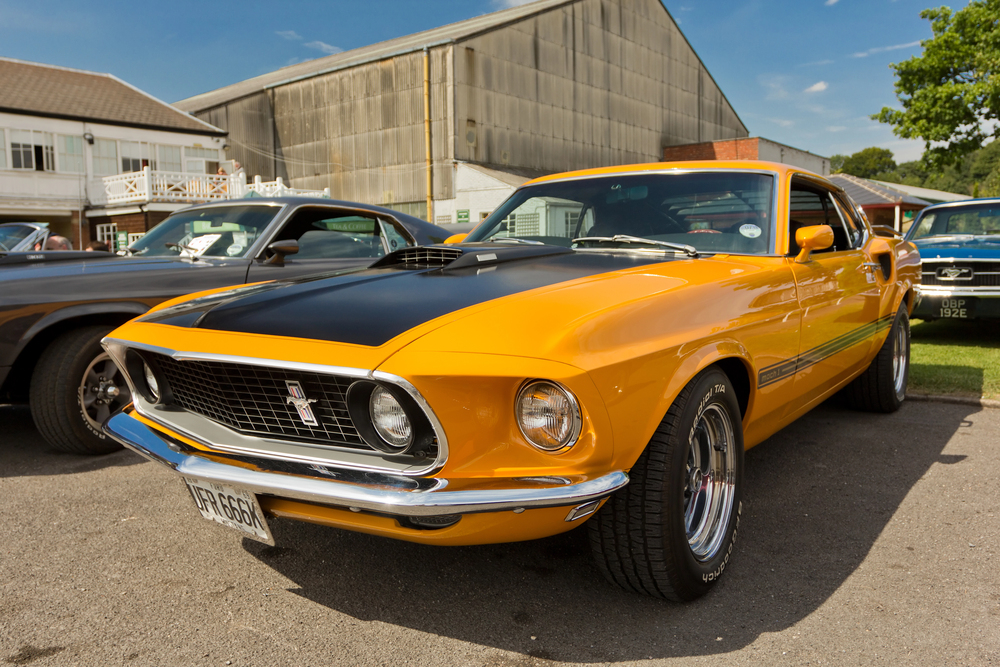The ongoing trade war initiated during the Trump administration has had lasting effects on the automotive industry, many of which remain unnoticed by consumers. Tariffs on raw materials, supply chain disruptions, and retaliatory measures from other nations have driven up costs in unexpected ways. Car manufacturers and dealerships have had to adjust their pricing strategies to offset these challenges. Here are 11 hidden ways the Trump trade war is quietly making cars more expensive.
Increased Tariffs on Imported Steel and Aluminum

Tariffs on steel and aluminum, key materials in car manufacturing, have significantly raised production costs. Automakers relying on imported metals have faced higher expenses, which get passed on to buyers. Even domestic manufacturers using local materials see price hikes due to overall market inflation. As a result, consumers end up paying more for both new and used vehicles.
Higher Costs for Imported Auto Parts

Many car components, including electronics and engine parts, come from overseas suppliers. Tariffs on these imports have forced manufacturers to either pay higher fees or seek alternative suppliers, both of which increase costs. These extra expenses trickle down to consumers, making even locally assembled cars more expensive. The added costs also impact repairs and replacement parts, further straining vehicle owners.
Retaliatory Tariffs from Other Countries

Other nations imposed their own tariffs in response to U.S. trade policies, affecting American automakers selling abroad. Companies like Ford and General Motors faced declining international sales, forcing them to raise domestic prices to make up for lost revenue. Retaliatory tariffs also affected parts imports, raising production costs. The overall result is fewer affordable vehicles for American buyers.
Increased Transportation and Shipping Costs

Disruptions in international trade have made shipping raw materials and car components more expensive. With stricter tariffs and logistical hurdles, the cost of moving goods has risen. These added costs impact car prices, especially for foreign models. The burden is eventually transferred to dealerships and consumers.
Related: 13 Costly Driving Blunders That Are Putting You at Risk
Supply Chain Disruptions

The trade war led to supply chain disruptions, making it harder for automakers to source necessary components. Delays in getting essential materials have slowed down production lines, reducing vehicle availability. Scarcity has led to increased demand, further driving up prices. Consumers have to either wait longer for cars or pay premium prices for in-stock models.
Related: 14 Muscle Cars That Defined the Boomer Generation
Rising Costs of Vehicle Repairs and Maintenance

Since many car parts are imported, tariffs have made repairs and maintenance more costly. Mechanics and repair shops now pay more for essential components, passing the extra costs to car owners. Even basic repairs, such as brake replacements or electrical fixes, have become significantly more expensive. This makes long-term car ownership pricier than before.
Related: 12 Weird Ways Your Car Reveals More About You Than You Think
Foreign Automakers Raising Prices to Offset Tariffs

Companies like Toyota, Honda, and BMW have had to raise their prices to compensate for higher import costs. Even vehicles manufactured in the U.S. use imported components, making them more expensive to produce. These price hikes have affected both luxury and economy vehicles. The trade war has essentially made it harder to find a budget-friendly foreign car.
Reduced Foreign Investment in U.S. Auto Plants

Many international car manufacturers reconsidered expanding their production facilities in the U.S. due to trade uncertainties. This slowed job growth and limited competition in the domestic market. A lack of investment means fewer locally assembled vehicles, leading to higher reliance on expensive imports. Consumers now have fewer affordable options on the market.
Related: 13 Smartest First Car Choices Millennials Can Make Without Regret
Declining Consumer Confidence in Car Purchases

With uncertainty around trade policies, many consumers delayed car purchases, expecting prices to stabilize. This led to temporary slowdowns in sales, prompting automakers to cut production. However, reduced inventory resulted in higher prices when demand picked up again. Buyers now face inflated costs, especially in the used car market.
Related: 13 Budget Friendly Tricks To Make Any Car Look Like It Just Left The Dealership
Job Losses in the Auto Industry Affecting Pricing

Tariffs and trade tensions led to layoffs in various sectors of the auto industry. With fewer workers producing and assembling cars, production slowed down. This reduction in supply contributed to rising vehicle costs. Automakers also had to adjust their pricing strategies to compensate for workforce losses.
Small Automakers Struggling to Stay Competitive

Smaller car manufacturers that rely on niche markets have been hit hardest by tariff-driven cost increases. These companies, unable to absorb the added costs, have raised prices or scaled back production. Some brands have even exited certain markets due to financial struggles. This reduces consumer choices, making it harder to find unique or affordable models.
Related: 12 Cars That Are Built to Last a Lifetime
The Trump trade war has had long-term effects on the auto industry, many of which continue to drive up car prices. From tariffs on raw materials to increased interest rates, these hidden factors have made both new and used cars more expensive. The resulting supply chain disruptions and reduced foreign investments have further contributed to rising costs. As consumers look for affordable vehicles, they face fewer options and higher financial burdens.
Disclaimer: This list is solely the author’s opinion based on research and publicly available information.
13 Budget Friendly Tricks To Make Any Car Look Like It Just Left The Dealership

Nothing beats the feeling of driving a brand new car fresh from the dealership shiny, spotless, and flawless. But keeping your vehicle looking that good doesn’t have to break the bank. With a few affordable tricks, you can restore its showroom shine and turn heads on the road. Here are 13 budget-friendly hacks to make your car look brand new again.
Read it here: 13 Budget Friendly Tricks To Make Any Car Look Like It Just Left The Dealership
New or Used? 15 Crucial Car Buying FAQs Uncovered!

Buying a car is a big decision, whether you’re considering a brand new model or a reliable used vehicle. With so many options, financing choices, and hidden costs, it’s important to make an informed choice. This guide answers 15 common car-buying questions to help you find the best deal for your needs and budget.
Read it here: New or Used? 15 Crucial Car Buying FAQs Uncovered!
14 Cars That Make More Sense to Buy Pre-Owned

Most new cars lose a significant chunk of their value the moment they leave the dealership, making pre-owned options a smarter financial choice. Some models, however, stand out because they offer exceptional reliability, lower depreciation, and nearly the same features as their brand new counterparts at a fraction of the price. Whether it’s a luxury sedan, a rugged SUV, or a performance car, buying used can get you more bang for your buck. Here are 14 cars that make the most sense to buy pre-owned.
Read it here: 14 Cars That Make More Sense to Buy Pre-Owned
You’ll love these related posts:
- SUVs for Seniors: Comfort and Safety Features That Matter Most As You Age
- These 12 Cars Are Appreciating Like Fine Wine – And Why You Should Consider Buying Now
- The Secret History of Car Brand Logos: Hidden Meanings and Design Evolution
- 13 Self-Healing Car Paint That it Finally Becoming a Reality?
- The Future of Electric Pickup Trucks: What’s Coming Next


